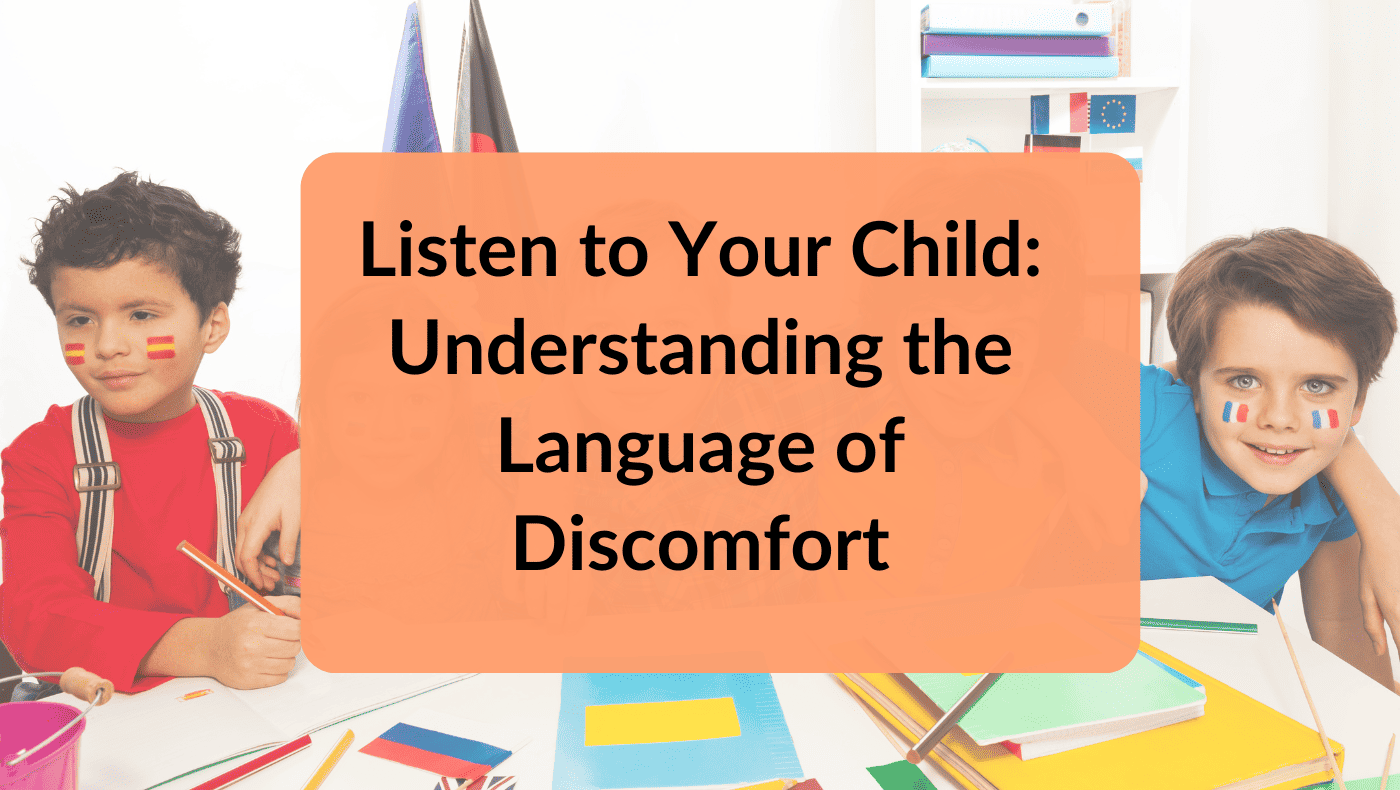Last updated on October 2nd, 2024 at 07:44 am
Listen to Your Child: Understanding the Language of Their Discomfort
How do you talk and listen to your kids?
As I stood in line at the airport, waiting to purchase bottled water, I overheard a child telling his mom that his brain hurt.
Intrigued, I turned around to check on the child.
His mother’s response caught my attention, “I’m sure it does with all the sugar you are eating,” she said, even as he continued to stuff his mouth with colorful, sugar-filled candy.
Cleary with this child, sugar was a contributing factor to his problems.
Because he is a child, he didn’t have the proper words to describe what was happening inside of him but instead, he said his brain was hurting.
This situation caught my attention and I figured maybe some parents are failing to listen to their child’s language and actions.
Is your child trying to express themselves and you are failing to listen?
In this case, the child was experiencing a sugar rush and as a result, his brain felt like it was hurting from being overloaded with sugar.
I believe that if we listen to what our children say and pay attention to their actions, we can better understand their needs.
This incident led me to reflect on two crucial points that I believe can be invaluable for parents and I will share them below.
Disclosure: There are affiliate links in this post. If you click the link and buy something, I might get a commission at no additional cost to you! This is what keeps this blog running so consider using these links if you decide to try any of my recommendations.
1. Understanding Your Child’s Unique Language
 Children often express their discomfort in unique ways, much like how a crying baby signals their distress.
Children often express their discomfort in unique ways, much like how a crying baby signals their distress.
As they grow older, they transition to using words, but for some children with limited communication abilities or those struggling with disorders, conveying their pain can be challenging.
They might resort to tantrums, head banging, or other attention-grabbing behaviors.
To embark on a successful nutritional journey, it’s essential to truly listen to your child.
When they say something like “my brain hurts,” it should serve as an immediate signal for action.
In the case of the child at the airport, it’s likely that the sugary candy was causing his discomfort, but his mother failed to recognize the impact of her choices on his well-being.
She acknowledged that he was in pain and even mentioned that she knew it probably was because of the candy but failed to take action.
This mother continued to let her son eat the candy even though she felt it was causing him to have a headache.
2. Just Say No to Harmful Foods
 If you know that sugar is a problem for your child, it’s crucial to put your foot down and stop feeding it to them.
If you know that sugar is a problem for your child, it’s crucial to put your foot down and stop feeding it to them.
On my own nutritional journey, I’ve encountered sympathy from people who express pity that my kids can’t indulge in junk food.
However, I don’t buy into that sympathy because my children are thriving without it.
There are plenty of healthier treatment options available that won’t harm your child’s brain.
I recommend introducing fruits and veggies to your child’s diet as a way to satisfy their sweet tooth without sacrificing good nutrition.
By doing this, you’ll be setting your kids up for success in the long run.
They will have better physical health and mental clarity that will help them when it comes time to focus in school or tackle a challenging task.
I encourage all parents to follow suit, as saying “no” is a powerful step toward ensuring your child’s long-term success.
Now, let’s delve deeper into what you can do as a parent to improve your child’s health.
3. Starting the Journey to Improved Health
Educate Yourself: Begin by learning about the nutritional needs of your child. Understand the harmful effects of excessive sugar and processed foods on their health. Knowledge is the first step toward making informed choices.
Explore Healthier Alternatives: As I mentioned earlier, there are numerous tasty and nutritious alternatives to sugary junk food. These options can be just as satisfying for your child while supporting their well-being.
Set a Positive Example: Children often mimic their parents’ behaviors. By embracing a healthier lifestyle yourself, you’re not only benefiting your own health but also providing a positive model for your child to follow.
Consult with Professionals: If you suspect your child has specific dietary or health concerns, consult with a nutritionist who can provide tailored guidance.
Create a Supportive Environment: Foster a home environment that promotes healthy choices. Stock your kitchen with wholesome foods, limit sugary snacks, and encourage physical activity.
In conclusion, it’s crucial for parents to listen to their children, especially when they express discomfort or distress.
By paying attention to their unique ways of communicating, you can address their needs more effectively.
Moreover, saying “no” to harmful foods and making healthier choices is a powerful step towards ensuring your child’s long-term health and well-being.
Begin this journey today, and watch your child flourish in a nurturing and health-conscious environment. Your efforts will set them on a path to a healthier, happier life.
Additional Resource:
- Reliable Support and Resources
- Navigating Negative Behaviors
- Understanding the Link Between Leaky Gut and Autism
- Common Mistakes Autism Parents are Making to Avoid
How do you talk and listen to your kids? Leave a comment below.





0 Comments